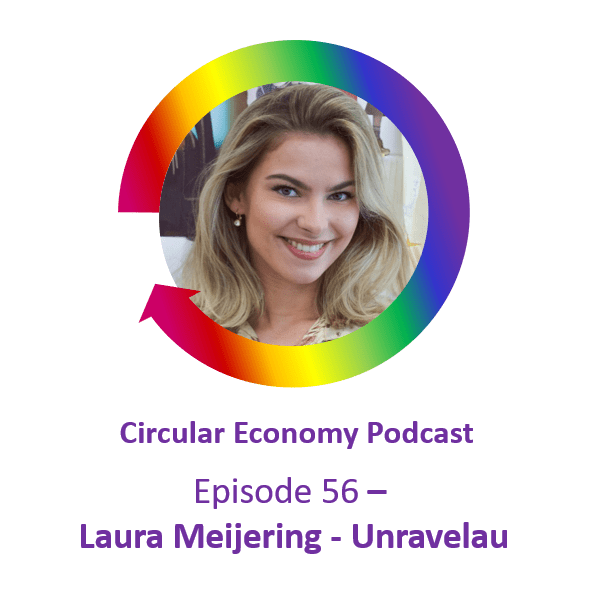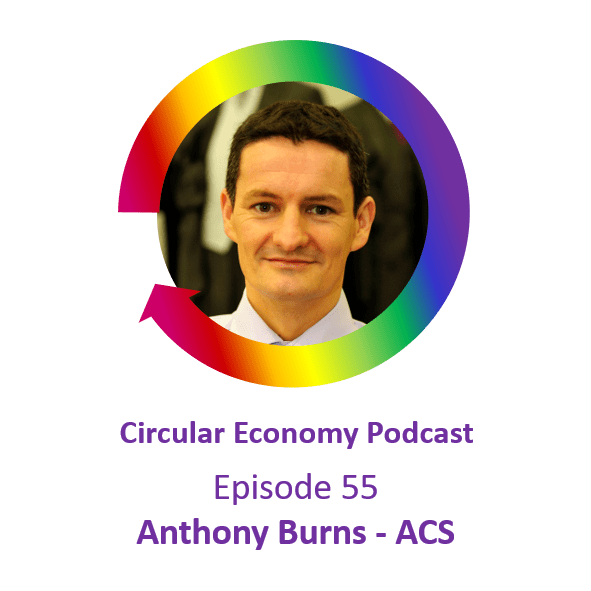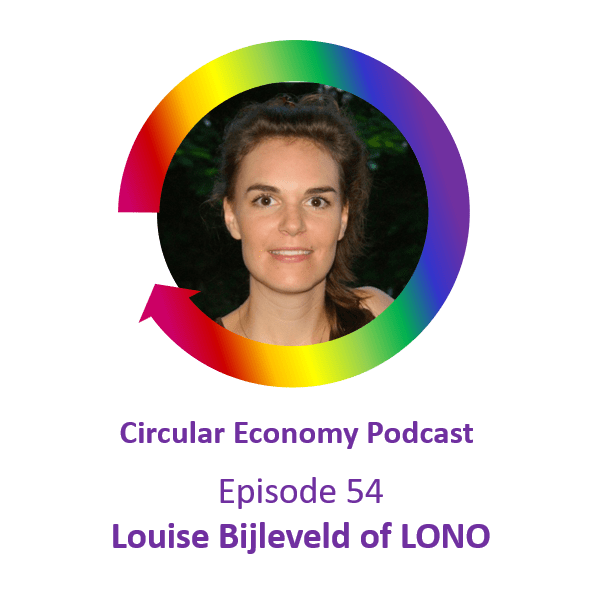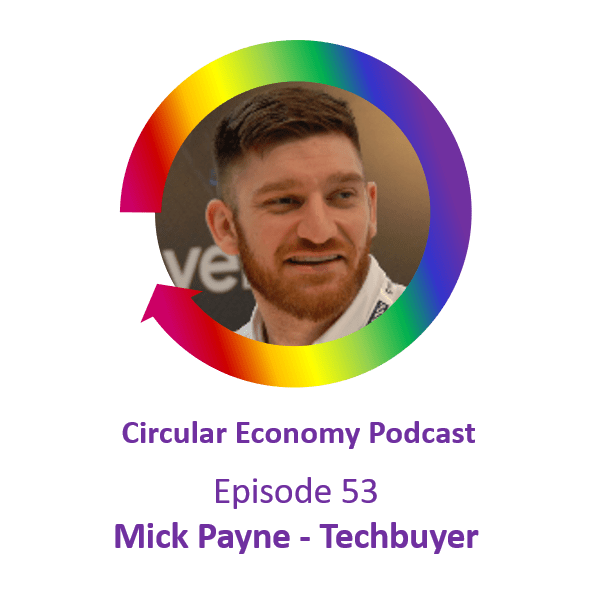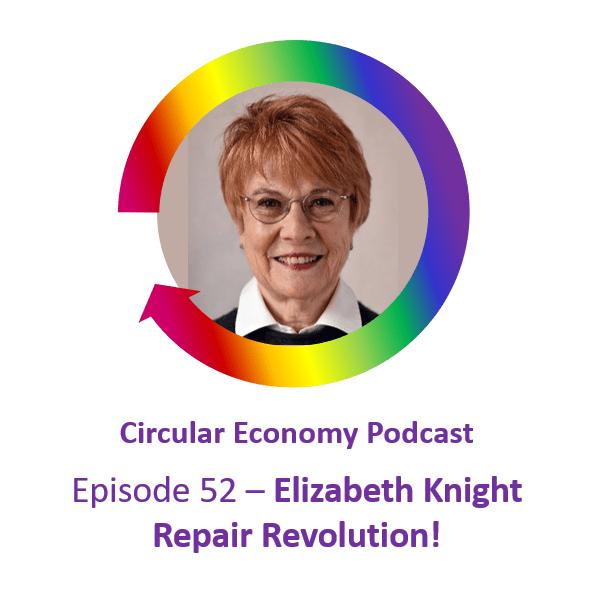Podcast: Play in new window | Download
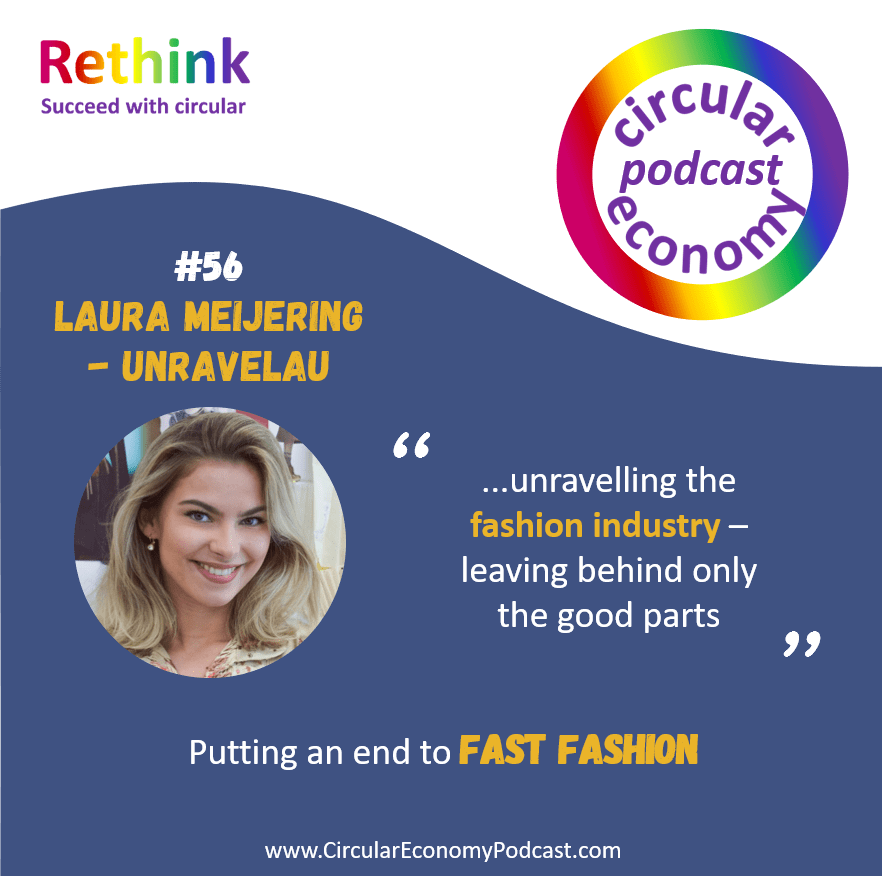
In this podcast, Catherine Weetman talks to Laura Meijering, a designer, fashion lover and entrepreneur from The Netherlands. While studying, Laura watched the True Cost documentary – something inside her snapped and she realised she wanted to be part of a better fashion system.
Laura founded UNRAVELAU in 2017, to unravel the threads of fashion and keep only the good parts. She wants to pioneer a new way of designing the clothes we wear. As Laura says, unravelling the fashion industry is a big job, and so UNRAVELAU starts by cutting the crap and spreading awareness of the impact we have on the planet. UNRAVELAU uses only organic and second-hand materials, and produces for customer commissions, so there is no dead stock.
Podcast host Catherine Weetman is a circular economy business advisor, workshop facilitator, speaker and writer. Her award-winning book: A Circular Economy Handbook: How to Build a More Resilient, Competitive and Sustainable Business includes lots of practical examples and tips on getting started. Catherine founded Rethink Global in 2013, to help businesses use circular, sustainable approaches to build a better business (and a better world).
Stay in touch for free insights and updates…
Read on for a summary of the podcast and links to the people, organisations and other resources we mention.
You can subscribe to the podcast series on iTunes, Google Podcasts, PlayerFM, Spotify, TuneIn, or search for “circular economy” in your favourite podcast app. Stay in touch to get free insights and updates, direct to your inbox…
Don’t forget, you can use our interactive, searchable podcast index to find episodes by sector, by region or by circular strategy. Plus, there is now a regular Circular Economy Podcast newsletter, so you get the latest episode show notes, links and transcript delivered to your inbox on Sunday morning, each fortnight. The newsletter includes a link to the episode page on our website, with an audio player. You can subscribe by clicking this link to update your preferences.
Links we mention in the episode:
- A Circular Economy Handbook: How to Build a More Resilient, Competitive and Sustainable Business – buy from any good bookseller, or direct from the publisher Kogan Page, which ships worldwide (free shipping to UK and US) and you can use discount code CIRCL20 to get 20% off: https://www.koganpage.com/CircEcon2 It’s available in paperback, ebook and on Kindle. If you buy it from online sources, make sure you choose the new edition with an orange cover!
- Sign up to get the podcast player and shownotes for each new episode emailed to your inbox
- Website: unravelau.com
- Instagram: https://www.instagram.com/unravelau/
- Personal LinkedIn: https://www.linkedin.com/in/laura-meijering-76706ab0/
- Circularity Gap Report https://www.circularity-gap.world/2021
- Gunter Pauli’s work http://www.zeri.org/ and https://www.theblueeconomy.org/
- The True Cost documentary https://truecostmovie.com/
About Laura Meijering
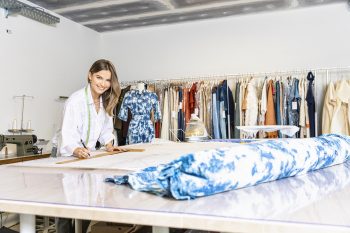
My name is Laura Meijering, I am currently 27 years old and I live in Almere. I grew up in a village named Castricum and I spent most of my younger days dressing up as a princess and daydreaming. After receiving my high school diploma, I had to choose between Psychology and Fashion-design. I was always interested in Psychology because I wanted to unravel the human mind and understand how people make choices. I was also interested in fashion because I was always trying to express myself via the way I was dressed. This meant that I loved shopping at H&M, Zara and Thrift shops to find my identity.
I decided to study Fashion Design because I knew that if I wouldn’t do something creative, I would not be happy. This was also the time when I discovered the downside of the fashion industry by watching the documentary ‘The True Cost’. And after watching this documentary, something inside me snapped and I realized something had to change.
In 2016 I received my BA in Fashion Design at the HKU in Utrecht, The Netherlands. With the freedom of making my own choices also came the responsibility to tell a genuine story. To make my lifetime dream in the fashion industry come true, it did not feel fair to take away any vital resources and add new clothes that are harmful to our planet.
I founded UNRAVELAU in 2017 to unravel the threads of fashion and keep only the good parts. In doing so, I hope to pioneer a new way of designing the clothes we are wearing.
UNRAVELAU is a Dutch high-end fashion brand with a low ecological footprint. UNRAVELAU’s goal is to “unravel” the fashion industry, leaving behind only the good parts, and putting an end to fast fashion.
Unravelling the fashion industry is a big job, which is why we start with (literally!) cutting the crap, and spreading awareness about the impact we have as people on our planet.
We “cut the crap” by only using organic and second-hand materials, turning them into limited or one-of-a-kind garments. The second-hand materials come mostly from the citizens of Almere, but we encourage anyone that has unwanted or worn-out clothes to send them our way, so we can give them a new life. We only produce when a customer commissions us to make something for them. This way, we don’t create dead stock, and we can even make sure the new item fits exactly to each customer’s needs, by changing some details or making it made–to-measure. This is why our production takes time, and we show our customers every step of the process behind their new item so they feel as much a part of the process as we do. By doing this we hope to share our responsibility towards the earth we live on.
We feel very responsible for our earth. Reusing and upcycling second-hand materials is one way of addressing the huge amount of textiles that get thrown away every day. Another way is to prevent waste by using our zero-waste cutting technique. This way, we don’t end up with fabric leftovers, and make sure even the tiniest threads are saved up to use again for unique details.
However, simply offering a sustainable product is not the answer if consumers are not aware of the impact they have on our planet. Therefore, UNRAVELAU also focuses on spreading awareness. By giving classes, lectures, and asking students questions, we help them to discover their harmful behaviour and show them the easy ways to change this into positive behaviours.
Interview Transcript
Provided by AI – add ~3:30 mins for the finished episode
Catherine Weetman 00:04
Laura, welcome to the circular economy podcast.
Laura Meijering 00:08
Thank you so much, Catherine for having me.
Catherine Weetman 00:11
Yeah, it’s great to finally talk to you after a few discussions backwards and forwards on email. And I think there’s lots of really interesting aspects to your business UNRAVELAU. Have I pronounced that right?
Laura Meijering 00:24
Yes, it’s UNRAVELAU. Indeed. Yeah.
Catherine Weetman 00:26
And I’m really curious to know a bit more about your background, and what inspired you to start UNRAVELAU?
Laura Meijering 00:34
Yes. So as a kid, I was always making up stories in my head and trying to express them to the outside world, for the clothes that I was wearing. And when I had to choose the studies, it was almost natural to for me to choose fashion design. And, however, during those studies, I didn’t just learn how to become a fashion designer, I actually learned more about the negative sides of the fashion industry. And after graduating, I decided that I didn’t want to contribute to that fast fashion system anymore. So that’s actually why I started UNRAVELAU – how to ‘unravel’ the bad practices in fashion and only remain the good parts.
Catherine Weetman 01:16
I hadn’t realised that’s what UNRAVELAU was all about. That’s really cool. I like that. Unravelling all those those threads. And that’s just reminded me about, I was moderating an education event for UNESCO. And Rene Bethmann, Bethmann, from Vaude Sports in Germany, we were talking about how to bring circle economy into education. And we’d been talking about, maybe we could integrate it into existing subjects and just encourage people to look at things through a different lens, looking at what we’re doing now that’s building up ‘take, make, waste’, and all those bad habits, and then how you can make it more circular. And he came up with a great phrase of integrating red and green threads through existing subjects. And I really like that kind of visual image of the red thread showing all the bad things that we’ve started doing since the Industrial Revolution. So that’s great. And yeah, that’s very good. Can you tell us a bit more about your philosophy?
Laura Meijering 02:23
Yeah, so um, well, what I’m doing with UNRAVELAU is that I offer limited one-of-a-kind products, and they’re made by organic or upcycled materials. And we only produce upon request. So it’s all made to order, which means that we don’t keep any death stock. And we also can make sure that the product that the client orders is also well fits fits to their body type. But also, maybe if they have any special requests, we can just easily add it to the garments. At the same time, I also offer education, because I realised that just offering a well sustainable product is not going to solve the huge problem that we have have with the fashion industry. So I decided to also focus on education, and make younger people aware of the impact that they have the impact that they have on the fashion industry and just on the whole environment.
Catherine Weetman 03:25
So talking a bit more about the education. What kind of programmes Do you offer? And who are they for?
Laura Meijering 03:34
Yeah, so currently, it’s quite broad. I offer education for all children from the age of eight, until I think students are till the age of age of 28, I think. So it already starts at primary school, I think you call it for the younger kids, I just do workshops with them, and they upcycle their old clothes. So for instance, their old jeans, they just cut it up and do everything with it that they can do at home, and therefore they’re making a new jeans with it. And next to that. I also give education on a high school. And I do that together with my colleague, Naomi, and we make programmes for high school students that make them aware of their impact. And at the same time, also give them tools on what they can do about your impact to make it a positive one.
Catherine Weetman 04:27
So in helping people understand the impact of what they’re wearing, what kind of things do you talk about, and which parts are people most shocked by?
Laura Meijering 04:40
Um, yeah, so we usually start with what kind of materials their clothes are made of. And that’s a very fun way to start because we start with a quiz and then I have all these sources such as a cotton plant and a plastic bottle and then next to that. I also have a fleece vest, and what else, maybe a leather bag, for instance, and then the children, they have to connect the two together. And they’re always shocked that plastic bottles are used to making fleece vests. And then when I tell them well, plastic is actually in a lot of your garments. If you look at the garments tack that you’re having to carry label and it says polyester, it’s actually made of the same substance as plastic bottles are made. And then they’re completely shocked. You’re like, Huh, so basically, I’m wearing a plastic bottle. And well, that is just so nice when you’re saying that, because I don’t have to tell them that it’s actually Well, not a very good thing for the environment. And they understand by themselves like, okay, I don’t want to wear a plastic, because that’s silly. Why would they do that? So by that they already made a choice of, well, maybe I don’t want to buy any polyester clothes anymore in the future.
Catherine Weetman 05:56
That’s interesting. And on LinkedIn, and in sustainable fashion press and so on recently, I’m starting to see quite a few arguments about natural fibres versus fossil fuel-based fibres. And how some of the lifecycle analysis, assessments are perhaps weighted in in one direction, and that things have been missed out for polyester and other synthetics and making them look lots better than the natural alternatives. And think it’s, it’s worrying, because these things have been put out by quite big organisations that, you know, should have should have known better. And so I’m worried that fashion starting to use the tobacco playbook, which is make it make the information all muddy, and puts out the information that you want to put out and kind of make everybody distrust all the other stuff. Are you seeing that? And how are you helping students get to grips with what’s what, what the real facts are? And what are just fake facts? Yeah, yeah, definitely,
Laura Meijering 07:15
definitely. And also, like, I’m not a big fan of synthetic fibres, I’m not a fan of it at all. But the positive thing of it is, of course, that it remains for a very long time. So that’s also something that we point out, like, you know, if you have a synthetic fibre, it will maybe last longer than for instance, a cotton t shirt, but you do have to think about the whole process of how it’s made. And we also say that cotton uses a lot of water. So it’s also not the best solution that we have. So basically, we just give them the facts, indeed, and some, yeah, the pros and cons of every fibre that we have, and then they can make up their own minds of what they want you to wear and what you want to buy.
Catherine Weetman 08:03
And of course, it goes beyond just the upstream supply chain impacts, doesn’t it into use and end of use. So thinking about some of the more natural fibres like wool, and so on, have natural antibacterial properties. So you might not need to wash them as much, avoiding the need for heating the water using the water putting chemicals into the water. And, conversely, we understand more about now about, particularly fleece fabrics, and how they’re shedding billions of microfibers through their lifetime. So people are starting to become aware of, you know, the whole end to end scenario.
Laura Meijering 08:43
Yeah, yeah. And I think right now, there’s not necessarily one thing, that’s good. And one thing that’s extremely bad, it’s still all a bit in the middle, because even the most well, the most natural fibres also don’t have the best process and how they’re made. But yeah, I think as long as you give people just the information they can do with it themselves what they want, and they can make their own choices, and they don’t need to be fooled by the media or by brands that greenwash them.
Catherine Weetman 09:14
Yeah. I think that the, the motto I like to follow is, or the way I like to encourage people is to just decide what you really care about, and then get really curious about that. So you’re motivated to research it and keep researching it. And you’re right, that we don’t necessarily know all the answers now. But if you stay curious, you can keep yourself informed and make sure that you start to move in the direction that the sciences is telling us to go. Yeah, indeed. Yeah. So coming back to some of the other services that UNRAVELAU offers. So we’ve talked with you mentioned the collections and you also have the Atelier service, maybe you could tell us a bit more about those.
Laura Meijering 10:03
Yeah. So at UNRAVELAU, we don’t produce more than one collection a year. And actually, right now, at this moment, we don’t produce any collections, but we just only produce whenever a client gives us an assignment. And what do you think is important about death is because even if you only make one collection a year, there’s still some pieces in there that people might not want. Which is your shame. It’s a shame of my time as an artist that I put in there. But also, it’s a shame of all the sources I’ve wasted with that. So now what we do, we go in, we have contact with the clients, and then they come to us and they say, Well, I would like to have a suit for this occasion, for instance, and based on a conversation with them, we get to know them better. And we can decide like, Okay, this is the kind of style that maybe suits you. And then kind of fabric doubled fit with it, then were presented to them. And if they liked the sketch, if they liked the idea that we continue with it, and we start making a prototype, and we do a fitting with them, and along the way, each time, the client can still say, Okay, I want this to be changed, I would be as a bit more to my taste, I think this is a bit too raw, I think this is too wide, I think this is too tight, can I change it a bit, and we’re just completely open to it, it will still in the end, it will still be in a revolute suit for the client. But by just listening to them very carefully, we can make sure that we actually make something for them that they want and that they will wear for a very long time.
Catherine Weetman 11:36
Something that they’re really careful. And I think Yeah, definitely. Ahead of the podcast, we were talking about one of your customers who wanted a jacket, and it went through quite a lot of iterations. But the result was a much more kind of flexible jacket, you know, a more multipurpose jacket that makes it sound wrong, but you’ll describe it much better than I can.
12:02
Yeah, yeah. And also more appreciated. So we actually started off with a jacket, which was very slim fit. And then during the fitting declined, she said, Well, you know what, I don’t really feel this kind of style, I’m actually more of a laidback type of person. So if you’re going to put me in a very slim fit jacket, I would just not feel comfortable in it. Plus, I also would like to wear the jacket outside as a blazer. So I said, Okay, well, that’s interesting. And we’re just going to alter it. So we actually just made a very straight jacket for her. And we added some buttons in there as well so that she could wear it inside as a blazer, but outside buttoned up as a complete jacket.
Catherine Weetman 12:47
And was there something about a belt as well?
Laura Meijering 12:51
Yes. Oh, yeah. Yeah, that’s right. Indeed, yeah, we also added a belt because even though the client wanted it to be, well, a loose fitted jacket, I still thought it’s always nice to have a bit of a waste in there. And she could take the belt off whenever she wanted did. But still make it a bit more chic if she feels like it.
Catherine Weetman 13:12
So that was a true custom-made garment with all sorts of you know, and another thing requirements coming up from the client. And yet you are able to really make something that she will treasure and get lots and lots of use out of in different scenarios and different situations. So that’s providing lots of long term value for money, isn’t it?
Laura Meijering 13:39
Definitely, definitely. And that’s just like so much more worth to me, then. I could have also made like 15 jackets at the same time that I did just as one jacket for her. But now just having declined next to me in this whole process just made it so more. So much more valuable for me as well. And at the same time also for the clients. So in the end, I was very happy and it was still a UNRAVELAU jacket, but also a part of the client.
Catherine Weetman 14:06
Sounds Sounds great. And so, yeah, what kind of things have you struggled with? And what surprised you in the process of building UNRAVELAU?
Laura Meijering 14:17
Um, well, when I started studying fashion design, I thought, Okay, I’m going to be a fashion designer. And I know it’s going to be hard. Because I’ve seen the Chanel documentaries and all the stress that goes with it. So you know, I think I can handle that. But because I chose to be well, more of a sustainable designer so much more. Yeah. thoughts came to it and also every decision that I make. There’s so many more. How do you say it is like, there’s a huge checklist that I have to check before I can actually make the decision because Otherwise, it’s not. It doesn’t fit for a company on referral. But it’s also it goes against my own values that I have. So I already chose a profession that’s like challenging. And then I decided to make it even more challenging by doing sustainable fashion. And at the same time, I do like a challenge very much. So every time I can make a decision, and I can make a design that’s Well, almost 100% sustainable, then I’m very proud of myself. And I’m very happy with the end results.
Catherine Weetman 15:32
Yeah, and I sense that you will always be setting the bar a bit higher each time. But also, those customers like that the lady who wanted the multipurpose jacket blazer coat can also help inspire your thinking, and help your checklist of questions to ask other customers so that more and more people coming out of the UNRAVELAU Atelier service with a garment that they absolutely love and will treasure. And that’s really the whole point of trying to make fashion more slow and sustainable, isn’t it? Instead of forgettable?
Laura Meijering 16:15
Yeah, no, definitely, definitely. And that’s also what I likewise, of course, I called my name, or my brand, UNRAVELAU, but I realised that if I just state the ‘U’, it’s also something for the customers. So they’re wearing themselves. And that’s also something that I really had to learn. When I first started fashion. I thought, okay, I am the designer, I have to decide for other people what they want. Which is, of course, completely insane. But that’s kind of how you’re educated. And now I realise, okay, I should not be telling them what they need, they have to tell me what day needs like they may be cannot. So they don’t have the inspiration or the creativity to do something, I can help them with it. And I can think of all the sustainable solutions that I have for them in order to make their wardrobe more sustainable. So instead of telling other people what to do, I now listen to them. And I’m more in collaboration with the client. And that’s wonderful.
Catherine Weetman 17:14
So it’s more of a co-creation to use the buzzword. Yeah. And I guess that engages your client even more in the end?
Laura Meijering 17:23
Yeah, yeah, definitely. Yeah. And it also, you know, if it happens with one client, then they’re happy. And then they tell it to somebody else. And then they become a client as well. So it’s like, well, how do you say it is not like an an oil stain, because that’s definitely the wrong words. You get what I mean? Like it’s becoming bigger and bigger, and influence becoming bigger and bigger, and also the awareness. And that’s just, that’s something that I would have never realised, too, that I would have been possible to make such an impact like that. And I’m very happy to that’s working out right now.
Catherine Weetman 18:00
Yeah, I guess, a bit like those green and red threads that we were talking about earlier, what you’re doing is connecting up lots of people through this green, green thread of the UNRAVELAU products. Yes. I hear so many stories from people involved in circular businesses, about word of mouth marketing is just incredible. And you know, people love the product so much in telling all of their friends, and they’re not having to spend money on advertising, which has got to be a good thing, hasn’t that.
Laura Meijering 18:37
Yeah, but I also think that’s maybe the thing that will. That’s the difference between sustainable fashion and first version, because of course, fast fashion is everywhere. And they have two big companies, and they have all the money to invest in marketing, and you see all these ads, but you don’t have anybody in those shops, who’s telling you what’s great about the brands? Or what’s the story behind the clothes. And if you look at the smaller, more sustainable brands, all those clothes have a story to tell. And I think that is what makes us different from fast fashion brands. And that’s also something that clients can connect with.
Catherine Weetman 19:16
Yeah, and I think people will feel much better and more kind of more comfortable with what they’re wearing when they know there’s a good ethics story behind it. Yeah. Instead of it either being obscure, or they already know because they’ve seen a film or heard something on I’ve seen something on social media, about the poor ethics and the low paying poor working conditions involved in much of fast fashion. And when you think about the amount of marketing spend that must be involved in persuading people to buy those things. It makes you realise Just how little money is actually going into the, into the garment and how much is going on marketing and helping convince people that they should fritter their money away on this stuff?
Laura Meijering 20:13
Indeed, yeah, I think that’s that’s what sets us aside, we just do it. We don’t act green like we don’t we don’t act as if we are green, we’re actually green because we’re doing it. So I think that’s what sets us apart.
Catherine Weetman 20:27
Yeah, definitely. So Laura, which What are your lessons learned and top tips for a business wanting to go circular?
Laura Meijering 20:37
Wanting to go circular? Well? Well, as I said, What I learned the most was that I had to listen to the to the customers to understand what they need, so I can give them something that they actually want. And by doing that, you’re not creating anything that nobody wants, and it doesn’t get thrown away. What I also learned is that well, I started with UNRAVELAU with like a full collection of items, that all needed, like different, a different presentation and a different amount of attention. And I think, because I started kind of big, if I would just have started with, for instance, one t shirt, or one one pair of trousers, I could have put all my values that I have would UNRAVELAU in that. And from that build an entire collection, instead of presenting one collection at once. I think that’s the biggest lesson. If you want to be circular, just start very small, and then listen to other people. And then every time you add something that people want, and then you build it up and don’t do it the other way around, because then you’re going to end up with a lot of wasted clothes. And it’s just a shame.
Catherine Weetman 21:53
Great tip. And that puts me in mind of the permaculture principle of small and slow solutions. Don’t try and reinvent the wheel and particularly not not all at once.
Laura Meijering 22:05
No, we’re definitely not
Catherine Weetman 22:06
So, Laura, thinking about your values, is the one of those that you think helps move us towards a better world that’s more sustainable and fairer.
Laura Meijering 22:17
What I think is very important is if people take themselves seriously, and if they also think of the consequences their actions have. And also think about how the media is influencing you how big fashion chains are influencing you, it actually has an impact on you. And you don’t you should not be silly about it and think oh, that’s not for me, that’s it doesn’t have any effect on me. So I won’t do anything about it. And if I buy this, I won’t make any effect on ever on anybody else. with it. I think if people just take that a bit more serious, and also as themselves questions about Okay, am I being influenced? Am I influencing other people? Do I have a negative impact on anything? They ask themselves that and start to? Well find the answers, I think, and we have all? Well, a lot of waste could be prevented by debt, I think and a lot of unnecessarily bought clothes could have been prevented by that.
Catherine Weetman 23:26
So with every action, you’re either being part of the problem, or part of the solution. And there’s no yes. happy medium.
Laura Meijering 23:36
No, no, I don’t think so. And you just have to be aware of that. Don’t think you’re you don’t have any impact. I just think that’s so silly that people think they don’t have an impact on anything. Yeah, it just doesn’t. Yeah. It just shocks me that people think and I think therefore giving education to younger people and make them aware of Okay, you actually have an impact and you can do something with it is so valuable.
Catherine Weetman 24:04
Yeah, I think that comes back to Gandhi’s philosophy. And he said something like It matters not what you do, but it’s very important that you do it. And yeah, lots and lots of tiny tiny actions can create, you know, a big wave. So I think I think you’re right. And I like that ethos of taking yourself seriously and and think about what you’re doing. So yeah, thank you have Laura, who would you recommend as a as a future guest for the programme? Um, well, I
Laura Meijering 24:38
think maybe one of the people who are part of the Upcycle Centre in Almere, because we haven’t discussed that yet, but I’m one of the entrepreneurs who has their absolute gay, well, next to to Upcycle Centre of Almere, and that gives me exclusive access to all the unwanted clothes that the citizens of Almere throw away. And I actually think it’s very interesting to find out more about the philosophy of the, of the Upcycle Centre and what their plans are for the future. Because I think they can be they’re already like a little bit circular with having the entrepreneurs, entrepreneurs making something new out of trash, basically. But they have so many more ideas of how, how they can be more circular. So I think they’re definitely an interesting guest to invite for the podcast.
Catherine Weetman 25:31
Mmm, sounds good. And it sounds like the kind of thing that could be applicable in so many towns and cities around the world. So it would be great to spread the word on that. Thank you. Definitely. Yeah, definitely. Laura, how can people find out more about you and UNRAVELAU, and get in touch? Well,
25:51
I’m very much active on social media on Instagram. And what we do on Instagram is that we have a behind the seams, so not scenes, but SEAMS and stories, in which we always share what we are doing in the Atelier. And it’s just a nice way of well for new people to get to know us. And so everybody can follow us on UNRAVELAU on Instagram. I also have a website, which is called www.UNRAVELAU.com. And people can always connect via LinkedIn on the UNRAVELAU account, but also at my personal one, which is Laura Meijering to ask me any questions about anything.
Catherine Weetman 26:33
Fantastic. And I’ll put all those links in the show notes at circulareconomypodcast.com so people can look them up. And yeah, I love the humour of the ‘behind the seams’ stories. That is really neat.
Laura Meijering 26:46
So even though you have to take yourself serious, you do have to laugh about yourself and whatever you’re doing, of course,
Catherine Weetman 26:53
absolutely. Yeah. humour, humour, makes the world go round, doesn’t it and connects us all? Definitely. Yes. Brilliant. So Laura, thank you very much for sharing all those insights. I think there are lots of brilliant tips in there for circular economy startups, not just in fashion, but in in lots of other areas as well, particularly in getting to understand your customer’s needs more closely, and taking yourself seriously. So thank you very much and look forward to hearing a bit more about what you’re up to in the future.
Laura Meijering 27:26
Yes, thank you so much for having me. Catherine.
Want to find out more about the circular economy?
If you’d like to learn more about the circular economy and how it could help your business, why not listen to Episode 1, or read our guide: What is the Circular Economy?
To go deeper, you could buy Catherine’s book, A Circular Economy Handbook: How to Build a More Resilient, Competitive and Sustainable Business. This comprehensive guide uses a bottom-up, practical approach. It includes lots of real examples from around the world, to help you really ‘get’ the circular economy. Even better, you’ll be inspired with ideas to make your own business more competitive, resilient and sustainable.
Please let us know what you think of the podcast – and we’d love it if you could leave us a review on iTunes, or wherever you find your podcasts. Or send us an email…
Podcast music
Thanks to Belinda O’Hooley and Heidi Tidow, otherwise known as the brilliant, inventive and generous folk duo, O’Hooley & Tidow for allowing me to use the instrumentals from the live version of Summat’s Brewin’ as music for the podcast. You can find the whole track (inspired by the Copper Family song “Oh Good Ale”) on their album, also called Summat’s Brewin’. Or, follow them on Twitter.
